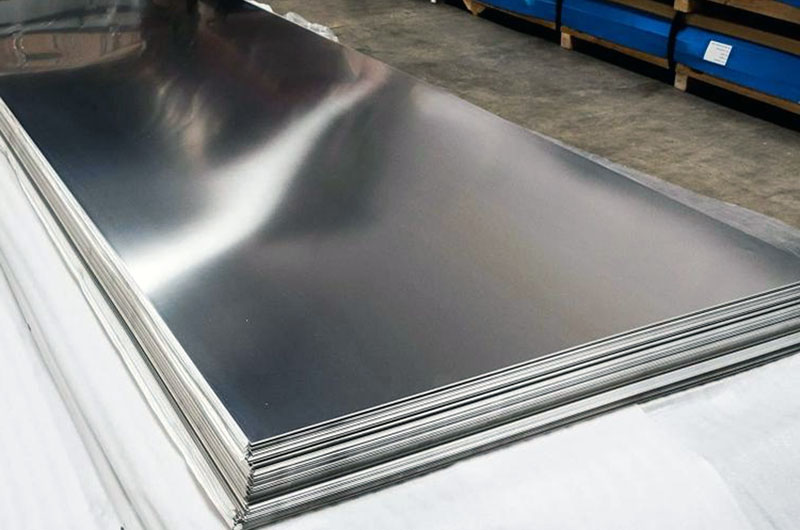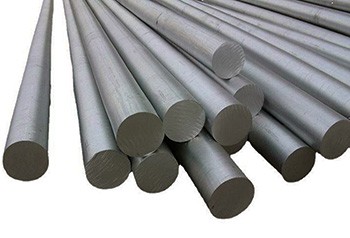5383 H111 Aluminum
5383-H111 aluminum alloy is a type of aluminum alloy, which undergoes specific heat treatment and mechanical processing to be in the H111 condition. This alloy is widely used in environments that require good corrosion resistance and moderate strength.

H111 Condition 5383 Aluminum
In the alloy condition naming, the number and letter following the "H" represent the degree of heat treatment and strength of the metal during processing.
The H111 condition indicates that the metal has undergone strain hardening, but its strength is below the upper strength limit allowed by the H11 condition (1/8 hardness).
The H111 condition usually means that the aluminum alloy undergoes slight cold working (such as stretching or rolling) during processing, but has not been fully strengthened.
Aluminum alloys in this condition exhibit good machinability, but their strength and hardness are relatively low.
5383 H111 Aluminum Mechanical Properties
| Property | Value |
| Elastic (Young's, Tensile) Modulus, GPa | 68 |
| Elongation at Break, % | 15 |
| Fatigue Strength, MPa | 130 |
| Poisson's Ratio | 0.33 |
| Shear Modulus, GPa | 26 |
| Shear Strength, MPa | 190 |
| Tensile Strength: Ultimate (UTS), MPa | 310 |
| Tensile Strength: Yield (Proof), MPa | 150 |
5383 H111 Aluminum Thermal Properties
| Property | Value |
| Latent Heat of Fusion, J/g | 390 |
| Maximum Temperature: Corrosion, °C | 65 |
| Maximum Temperature: Mechanical, °C | 200 |
| Melting Completion (Liquidus), °C | 650 |
| Melting Onset (Solidus), °C | 540 |
| Specific Heat Capacity, J/kg-K | 900 |
| Thermal Conductivity, W/m-K | 130 |
| Thermal Expansion, µm/m-K | 24 |
5383 H111 Aluminum Electrical Properties
| Property | Value |
| Electrical Conductivity: Equal Volume, % IACS | 29 |
| Electrical Conductivity: Equal Weight (Specific), % IACS | 97 |
5383 H111 Aluminum Alloy Composition
| Element | Range (%) |
| Aluminum (Al) | 92 to 95.3 |
| Chromium (Cr) | 0 to 0.25 |
| Copper (Cu) | 0 to 0.2 |
| Iron (Fe) | 0 to 0.25 |
| Magnesium (Mg) | 4.0 to 5.2 |
| Manganese (Mn) | 0.7 to 1.0 |
| Silicon (Si) | 0 to 0.25 |
| Titanium (Ti) | 0 to 0.15 |
| Zinc (Zn) | 0 to 0.4 |
| Zirconium (Zr) | 0 to 0.2 |
| Residuals | 0 |
5383 H111 Aluminum Corrosion Resistance and Applications
- Corrosion Resistance: 5383 aluminum alloy has excellent corrosion resistance, particularly suitable for marine environments and high-humidity areas. It is primarily used in ships, offshore platforms, marine engineering, and other fields.
- Seawater Corrosion Resistance: Due to its higher magnesium content, 5383 aluminum alloy is particularly suitable for environments resistant to saltwater corrosion and is widely used in ship hulls, seawater pipelines, and ship compartments.
- Weldability: Due to its composition, 5383 aluminum alloy is suitable for welding and can maintain good strength and corrosion resistance after welding.
Manufacturing Processes Suitable for 5383 H111 Aluminum
- Cold Working: In the H111 condition, 5383 aluminum alloy has undergone cold working processes (such as stretching, rolling, etc.), but with lower strength, making it suitable for applications requiring light processing and forming.
- Heat Treatment: Compared to other aluminum alloys with higher strength conditions, 5383 aluminum alloy in the H111 condition has not undergone strengthening heat treatment, making it suitable for applications requiring higher ductility and machinability.
Common Applications of 5383 H111 Aluminum
| Application | Description |
| Marine and Offshore Applications | 5383 H111 aluminum alloy is widely used in ship hulls, ship frames, and seawater pipelines, among other components. With its outstanding corrosion resistance, it is particularly suitable for environments exposed to seawater for extended periods. Its moderate mechanical strength allows it to withstand the pressures and fluctuations of maritime navigation while maintaining a long service life, reducing maintenance and replacement costs. |
| Transportation Field | In parts of the aerospace, automotive, and transportation industries, 5383 H111 aluminum alloy shows excellent formability, making it suitable for components that require complex shapes and lightweight materials. Its good machinability makes it an ideal material for lightweight design and efficient production, especially in applications where high strength is not a primary requirement. |
| Construction Field | In the construction field, 5383 H111 aluminum alloy is commonly used in medium-strength structural applications, particularly for lightweight frame structures. This aluminum alloy provides sufficient strength and toughness, making it suitable for building facades, door and window frames, and other applications requiring corrosion resistance and ease of processing, ensuring the durability and long-term stability of the structure. |
5383 H111 Aluminum Advantages and Disadvantages
Advantages of 5383 H111 Aluminum
- Excellent corrosion resistance, especially suitable for marine environments.
- Good machinability, suitable for forming and processing complex shapes.
- Good ductility and weldability.
Disadvantages of 5383 H111 Aluminum
- Lower strength, unsuitable for high-strength structural applications.
- Its strength may be insufficient in some high-temperature applications.
5383-H111 aluminum alloy is a material with good corrosion resistance and moderate strength, making it suitable for applications requiring good formability and medium-strength structures, especially in marine, transportation, and construction fields. Its characteristics in the H111 condition allow it to maintain high machinability while providing sufficient durability and reliability.
Recommended for you
-
5383 marine grade aluminum plate has excellent corrosion resistance and high strength. Aluminum alloy 5383 is commonly used in shipbuilding and other maritime structures where durability and resistance to salt water corrosion are critical.
-
5383 H112 aluminum is a corrosion-resistant, medium-strength alloy with excellent formability, making it ideal for marine applications. It is also cost-effective for structural components exposed to harsh environments.
-
5383-H321 aluminum has high strength and excellent corrosion resistance, making it suitable for high-load marine applications, especially in environments that require resistance to intergranular corrosion and exfoliation corrosion.
-
5383-H116 aluminum offers good corrosion resistance through specific heat treatment and cold working, making it suitable for light-load marine applications, especially for long-term use in seawater environments.
-
5383 H34 aluminum alloy is a high-strength aluminum alloy that has undergone strain hardening and stabilization treatments, offering excellent corrosion resistance and weldability. It is widely used in marine, transportation, and construction fields.
-
5383-H32 Aluminum is an aluminum alloy that has undergone strain hardening and stabilization treatment, belonging to the aluminum-magnesium alloy series. The "H32" temper indicates that the alloy has been strain-hardened through cold working and then stabilized by appropriate heat treatment, with strength lying between the annealed (O) and full-hard (H38) states.
-
5383-O aluminum alloy is the annealed (O condition) version of 5383 aluminum. It belongs to the aluminum-magnesium alloy series and has excellent corrosion resistance, particularly outstanding in marine environments.
Other content readers are interested in
-
5083 5383 O H112 Marine Grade Aluminum Bars
5083 5383 O H112 Marine Grade Aluminum Bars are certified by CCS, DNV, NK, CCS, ABS, BV, LR, KR and other classification societies, and their quality fully complies with world marine grade standards.
Recommended for you
-
5052 marine aluminum alloy is a high-strength, corrosion-resistant, easy-to-process and weld aluminum alloy, which is widely used in the manufacture of ships and marine structures.
-
5083 is basically used to manufacture ship hulls because of its relatively high strength and good corrosion resistance.
-
5059 aluminum is both a high-magnesium and high-zinc alloy, offering excellent corrosion resistance and fire resistance.
-
5086 aluminum alloy is irreplaceable in hull and deck applications in marine operating environments due to its unique seawater corrosion resistance, excellent low-temperature toughness, and good weldability.
-
5383 aluminum offers excellent fatigue resistance and crack resistance, and its unique properties make it irreplaceable in the design of high-speed vessels and marine structures that require long-term fatigue resistance.
-
5456 aluminum, with its unique high strength, exceptional fatigue resistance, and resistance to stress corrosion cracking, is irreplaceable in heavy-duty hull structures.
-
5754 aluminum is a medium-to-high strength alloy with excellent weldability, a low tendency for welding cracks, and high strength in both the weld joint and the crystalline metal.
More content of interest to readers
5383-O Aluminum vs. 5456-O Aluminum 5383-H32 Aluminum vs. 5456-H32 Aluminum 5383-H111 Aluminum vs. 5456-H111 Aluminum 5383-H116 Aluminum vs. 5383-H321 Aluminum 5383 Aluminum vs. 5456 Aluminum 5383-H112 Aluminum vs. 5456-H112 Aluminum 5383 Aluminum Hot Rolling Process 5083 vs 5383 Aluminum Alloys: Which is Better for Your Project?

